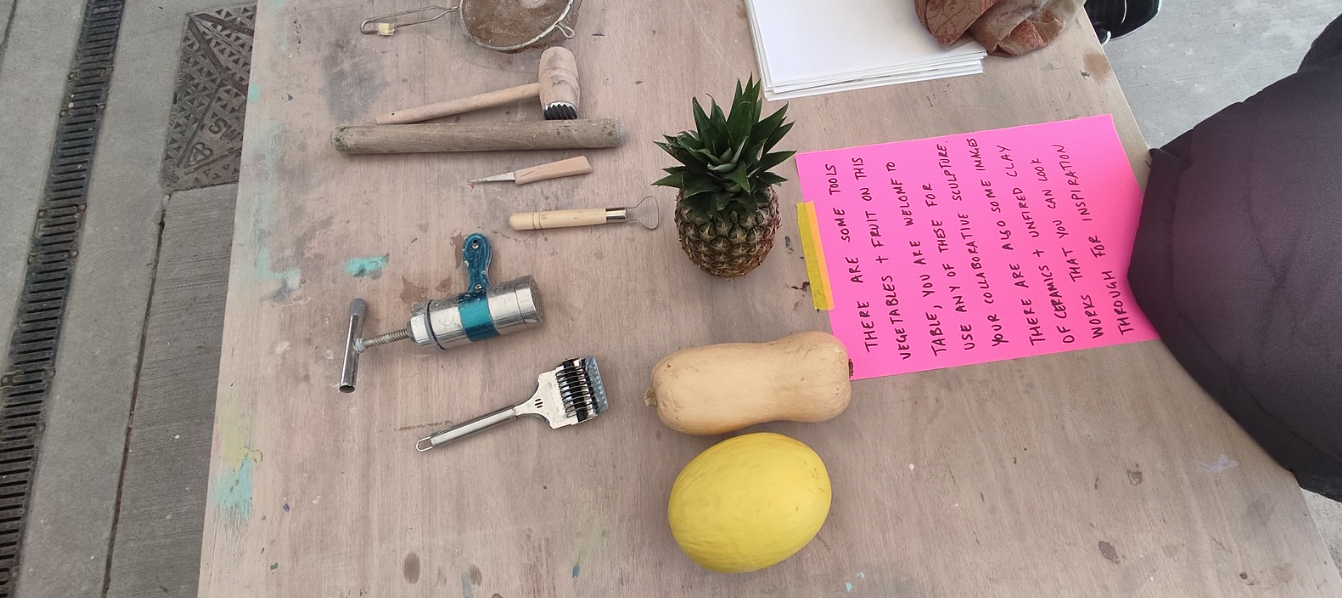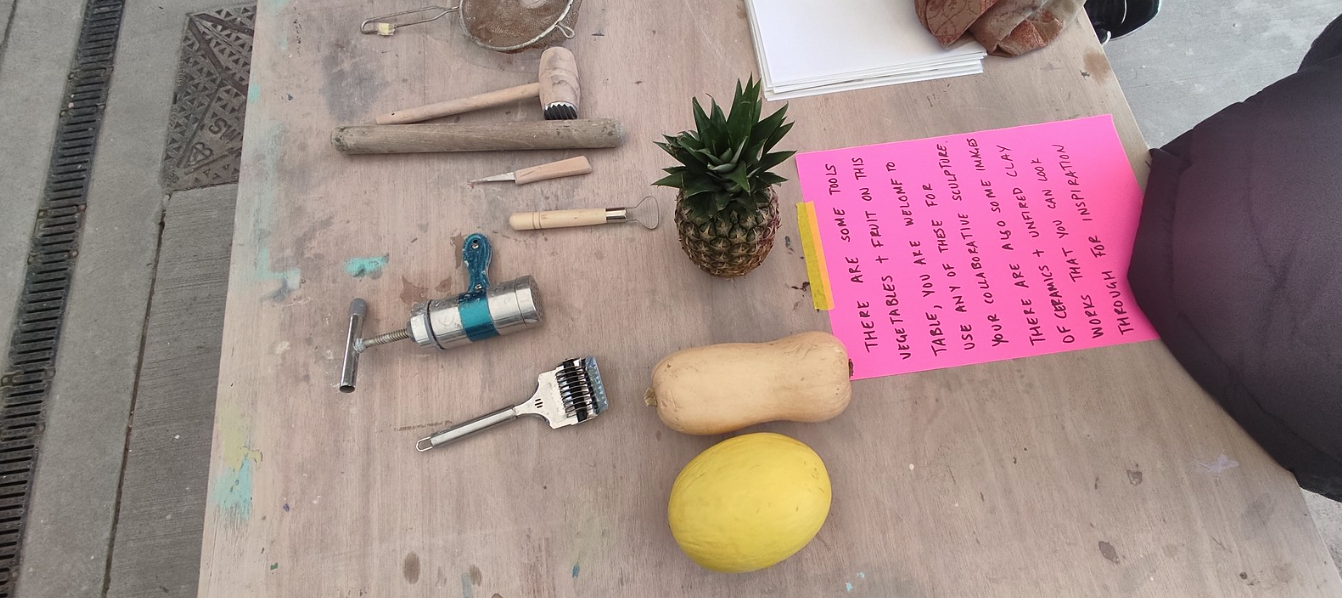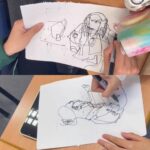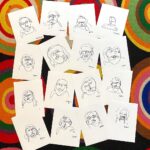This week, we have been studying the Artist’s Toolkit and open educational resources (OER) through various learning exercises, including reading about OER theory and visiting associated websites, using the Toolkit in practice, and producing an OER from a “closed” source. This blog will examine how to develop an Artist’s Toolkit, a thorough, open educational resource based on these learning experiences.
It is crucial to comprehend the artist’s toolkit and open educational resources (OER). According to a new white paper released by The Hewlett Foundation’s Education Program,
open educational resources are those educational materials that can be used for free online and that anyone can reuse, revise, remix, and redistribute in order to aid in their learning. These educational materials often consist of lectures, books, and curricula. The content of each OER differs depending on its intended user. For instance, we have found separate OER platforms in our basho for people who require advanced education and those who offer elementary education to kids.
Toolkits are collections of learning materials and instructions that enable independent learning. Thus, a toolkit for an artist aids in the creation of art. This makes me think of the “scores” introduced in another course and can be seen as a toolkit.
Once I understood the concept of a toolkit, I continued to consider how to create an artist’s toolkit. I tried to clear about the learning materials in the toolkit. There are two different types of learning material in the artist’s toolkit that I have learned about, the first of which is highly relevant to the content of the toolkit and sometimes even requires professional guidance. During our visit to the Edinburgh Sculpture Workshop, we tried out different Artists’ Toolkits, with different materials provided for each toolkit. For instance, we were given different humidity muds, sculpting tools, molds, and images of sculptures to serve as inspiration in one toolkit for making clay sculptures, while in another toolkit for making wood carvings, we were given cutting tools, drilling tools, and hot melt glue for wood. These materials are very specialized and can truly enable us to develop a good piece of art, but for the ordinary individual, gathering all these materials frequently takes a lot of time and effort.

The other category of learning resources is easier to find and is frequently seen in daily life. The “wicked art assignment” websites require people to create their artwork using everyday items. For instance, in an art project, ‘Old Language – New Images,’ students just need to take a page from an old book, which virtually everyone has.
Along with taking into account the material that the artist’s toolkit should contain, it is crucial to create a straightforward guide that anybody can follow. I associate it with ‘score,’ a concept we studied in another course. Like musicians require scores to help them play their instruments, artists also need scores to help them use the materials I mentioned to produce their works of art. This is related to Social Constructivism theory. Students can learn independently with the help of instructions. The instructions must be clear and not overly detailed to allow students to explore more freely and even change a portion of the instructions while working on the project. This will enable students to pursue their learning paths. For instance, “off,” one of the “art assignments, ” merely instructs students to turn off a screen and take a photo of the screen. As a result, while some students may be interested in the outside environment’s reflection on the screen, others may see the screen as the medium reflecting light, or some may even decide to use this instruction to make a video.
So how do we make the artist’s toolkit an OER so everyone can access it? On the one hand, deploying a toolkit like the Edinburgh Sculpture Workshop would be challenging since we need to avoid making assumptions about users. Due to the nature of online resources, it is hard for a toolkit to contain specialized materials like molds and sculpting tools and have people on hand to assist students. Therefore, the materials should preferably be unconstrained, based on common items, or drawn from personal experience if we are required to create an artist’s toolkit that is an OER. For instance, the ‘One Minute Sculpture‘ art assignment on the aforementioned website called ‘art’ assignment has no restrictions on the materials used, so you can see people creating the piece with sand, cards, or even their faces. Another illustration is Assignment #32 from the website “Learn to Love You More”: Draw a scene from a movie that made you cry, which only requires people to draw a scene based on their previous experience watching a movie, again without the need for complicated materials.
On the other hand, OER needs to have a website or platform. When a toolkit is online, students can more easily search for one that meets their needs and tickles their interests. They can also interact on social networking sites to promote collaborative learning. Connectivism learning theory holds, “Learning and knowledge rest in diversity of opinions.” When all artwork is uploaded to the internet and made freely accessible to everyone, students may see what others have done with it and use that as inspiration for their work. For instance, when I tried the ‘Art by Selection‘ program, I saw someone combine artwork with an image of an eye, and I immediately thought of what the image might look like if I substituted a hand or foot for the eye. Unconsciously, we are impacted by the work of others and compare and contrast what we have learned.
In conclusion, several resources and instructions need to be taken into account when designing an artist’s toolkit. When we need to create an Artist’s Toolkit that is a comprehensive open educational resource (OER) and has few resources to mobilize, I t is best to provide instructions that are clear and succinct, leave room for learners to adapt them and attempt to avoid Limiting the materials needed to make artwork. In addition, building an online communication platform is a crucial component of OER.
Citations used in this page:
- ‘Open Educational Resources: Breaking the Lockbox on Education’. Hewlett Foundation, 26 Nov. 2013, https://hewlett.org/open-educational-resources-breaking-the-lockbox-on-education/.
- ‘Assignments’. Wicked Arts Assignments, https://www.wickedartsassignments.com/assignments. Accessed 16 Oct. 2022.
- ‘Assignments’. The Art Assignment, http://www.theartassignment.com/assignments-landing. Accessed 16 Oct. 2022.
- Learning To Love You More. http://www.learningtoloveyoumore.com/. Accessed 16 Oct. 2022.
For more details about what I do in this course, please click the link below:





s2444438
20th October 2022 — 5:51 pm
The authors think carefully about art kits and OERs, including a discussion of the difficulty and availability of art toolkits and how to make them an OER. However, the author seems to focus more on the users of art kits than on the creators, and is committed to providing ways to make them accessible without paying particular attention to the difficulties of the creators of the scenarios who have little funding and resources to establish the art toolkits. More additions and responses to this issue from the authors are expected~
s2298567
21st October 2022 — 2:30 pm
I love your page. It looks really cool. It’s great that you shared your knowledge of OER in your post. You also share the sculpture Studio in Edinburgh as an example of an artist’s toolkit and share your own feelings. You mentioned that there are resources and instructions to consider when designing an artist’s toolkit. I’m curious what kind of resources you mean. Can you elaborate on that
s2341902
22nd October 2022 — 10:19 pm
chenyan presents his understanding of OER very clearly, and uses a lot of academic literature to argue her point.
wjake
24th October 2022 — 1:21 pm
Chenyan Wang, this was another impressive blog post. You did well to balance different facets and applications of Artist Toolkits and the dilemmas this provides a creator with. It was very encouraging to see you building bridges between courses and identifying the relationship between scores and toolkits. You made great use of examples from the course and demonstrated the depth with which you have been engaging with the material and thinking about it, keep it up!